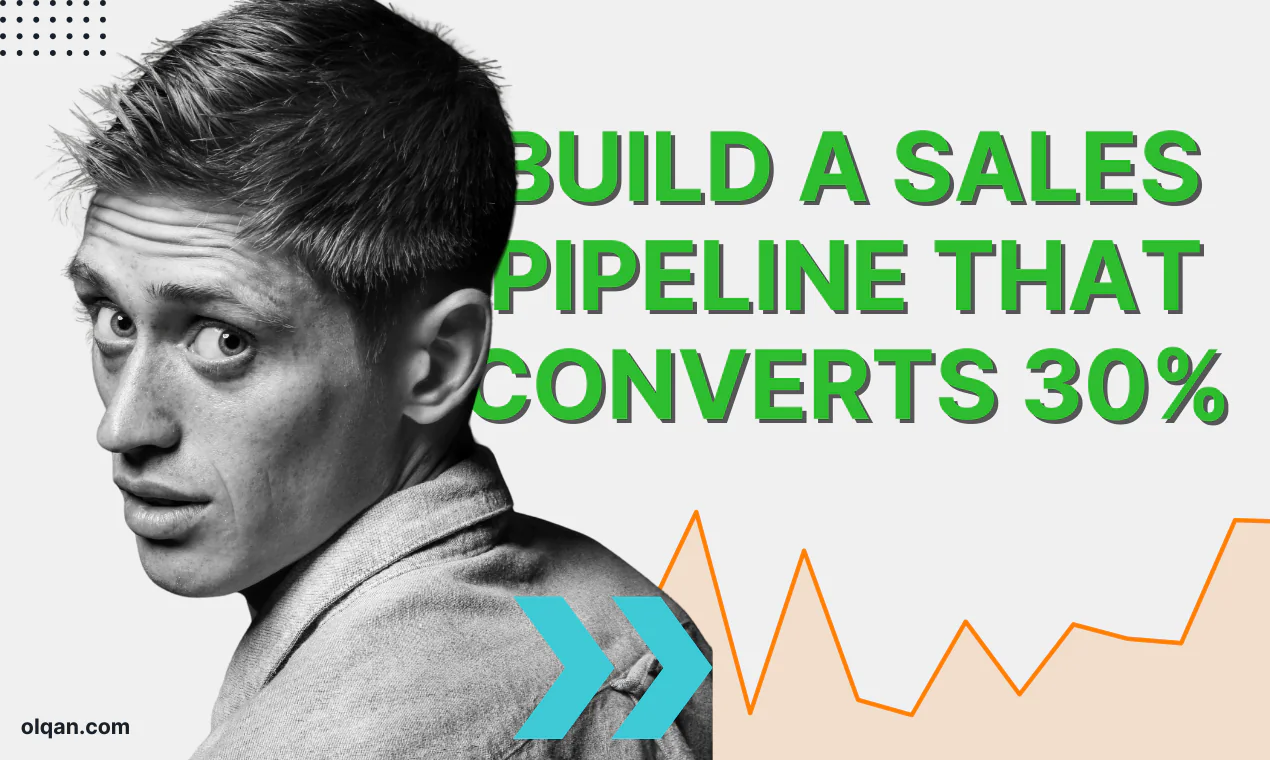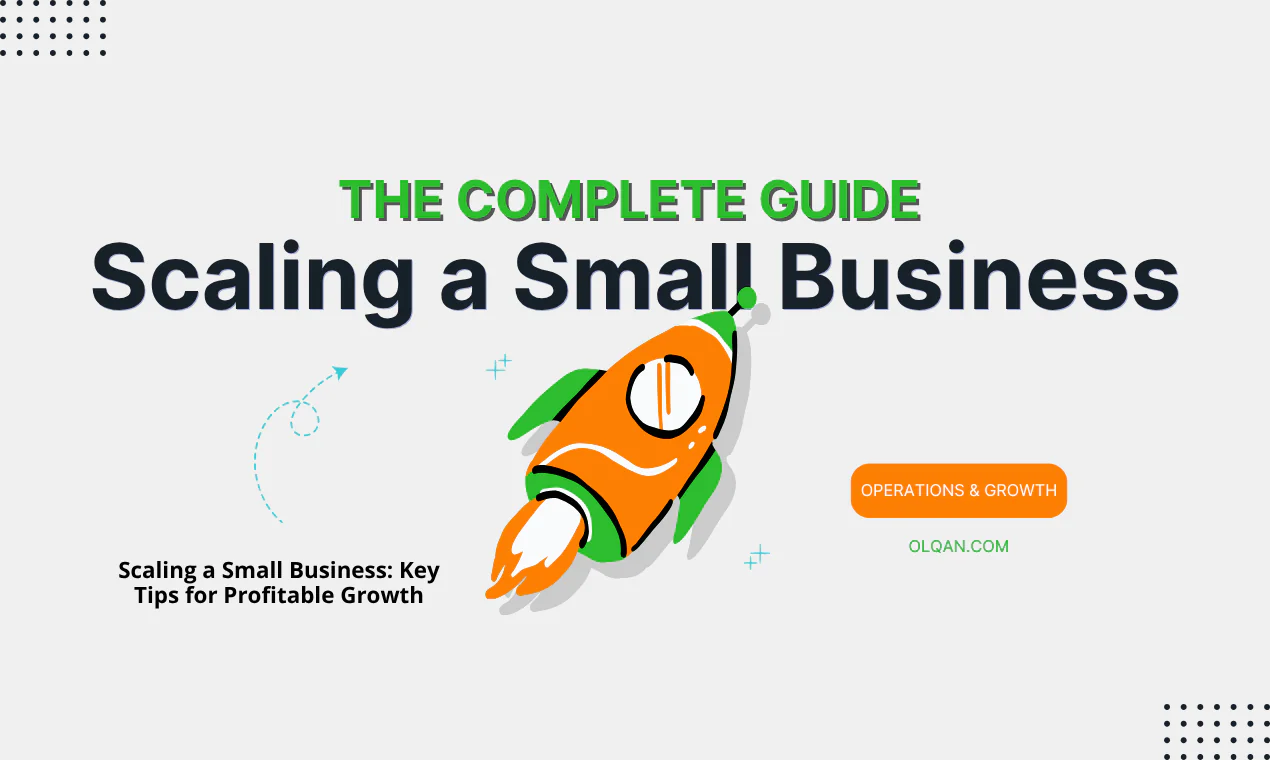
Choosing the wrong project management methodology is like trying to build a house with a screwdriver when you need a hammer. It’s not that the tool is bad – it’s just not right for the job.
If you’re a business owner, founder, or operations manager struggling to keep projects on track, you’ve probably wondered: “Should we be using Agile? What about Scrum? Is Waterfall dead?” The truth is, there’s no one-size-fits-all answer. The best methodology depends on your business type, team size, project complexity, and company culture.
Ready to streamline your project management? Discover Olqan and its flexible workflows designed for growing businesses.
In this comprehensive guide, we’ll break down the 6 most popular project management methodologies, help you identify which one fits your business, and show you how to implement it successfully. By the end, you’ll have a clear roadmap for choosing the methodology that will transform your project chaos into systematic success.
The 6 Essential Project Management Methodologies
1. Waterfall Methodology
What It Is: Waterfall is a linear, sequential approach where each phase must be completed before the next begins. Think of it like a traditional assembly line-you can’t paint the car before building the chassis.
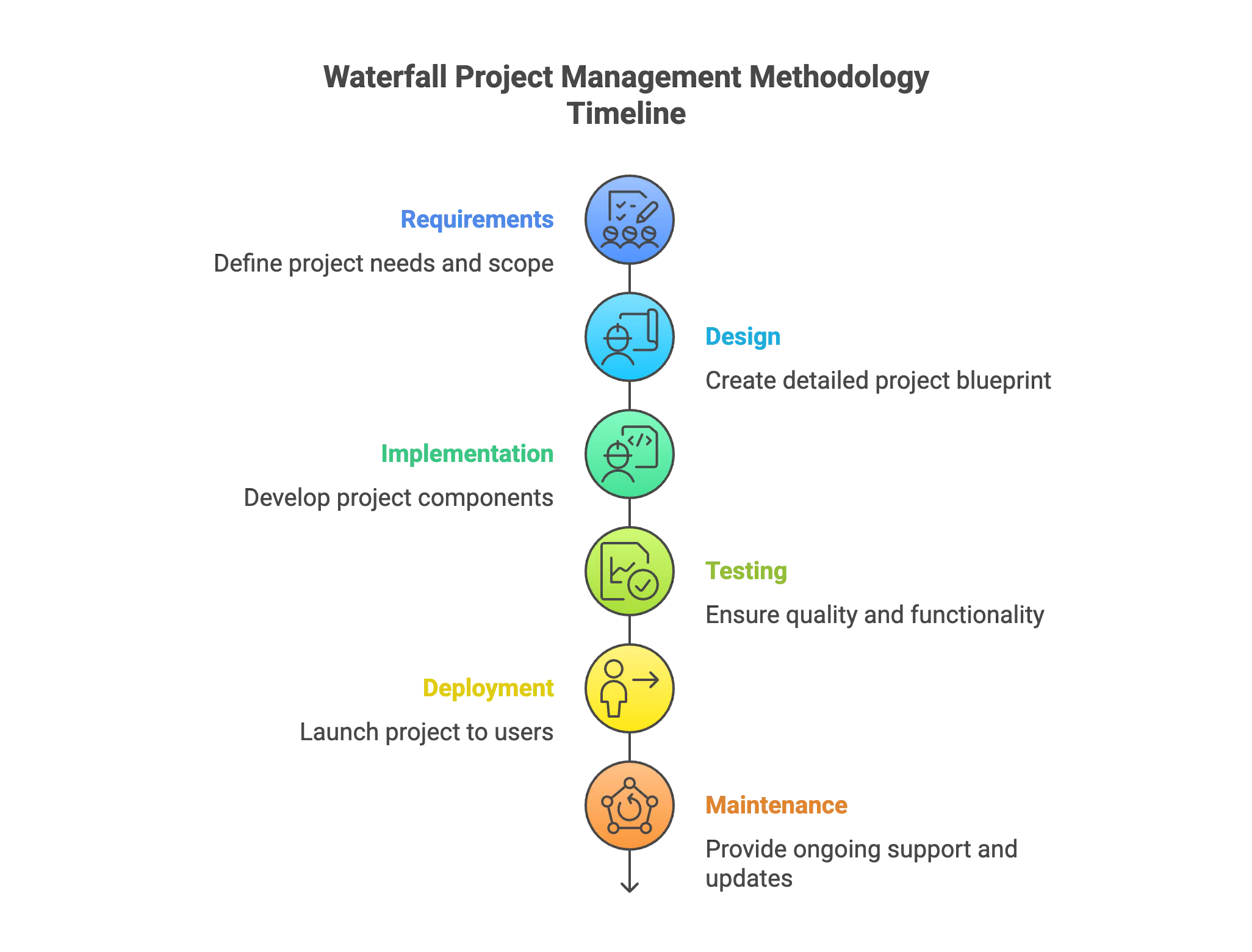
How It Works:
- Requirements Gathering – Define everything upfront
- Design – Create detailed plans and specifications
- Implementation – Build according to specifications
- Testing – Verify everything works as planned
- Deployment – Launch the final product
- Maintenance – Ongoing support and updates
Best For:
- Construction projects with fixed requirements
- Manufacturing processes with clear specifications
- Compliance-heavy industries (healthcare, finance, government)
- Projects with experienced teams and well-understood requirements
- Fixed-budget, fixed-timeline projects
Pros:
✅ Clear timelines and milestones
✅ Detailed documentation
✅ Easy to track progress
✅ Works well with remote teams
✅ Predictable costs and timeline
Cons:
❌ Inflexible to changes
❌ Late discovery of issues
❌ Customer feedback comes too late
❌ Risk of delivering unwanted features
Real Example: A manufacturing company used Waterfall to launch a new product line. With fixed regulations and clear specifications, they completed the 8-month project on time and 5% under budget because requirements didn’t change.
📋 Olqan Advantage: Our Project Suite feature includes built-in milestone tracking, documentation management, and approval workflows to keep your linear projects on track.
2. Agile Methodology
What It Is: Agile is an iterative approach that emphasizes flexibility, collaboration, and rapid delivery of working products. Instead of planning everything upfront, Agile teams work in short cycles (sprints) and adapt based on feedback.
How It Works:
- Short iterations (1-4 weeks) called sprints
- Regular customer feedback and collaboration
- Working software delivered frequently
- Continuous improvement and adaptation
- Cross-functional teams working together daily
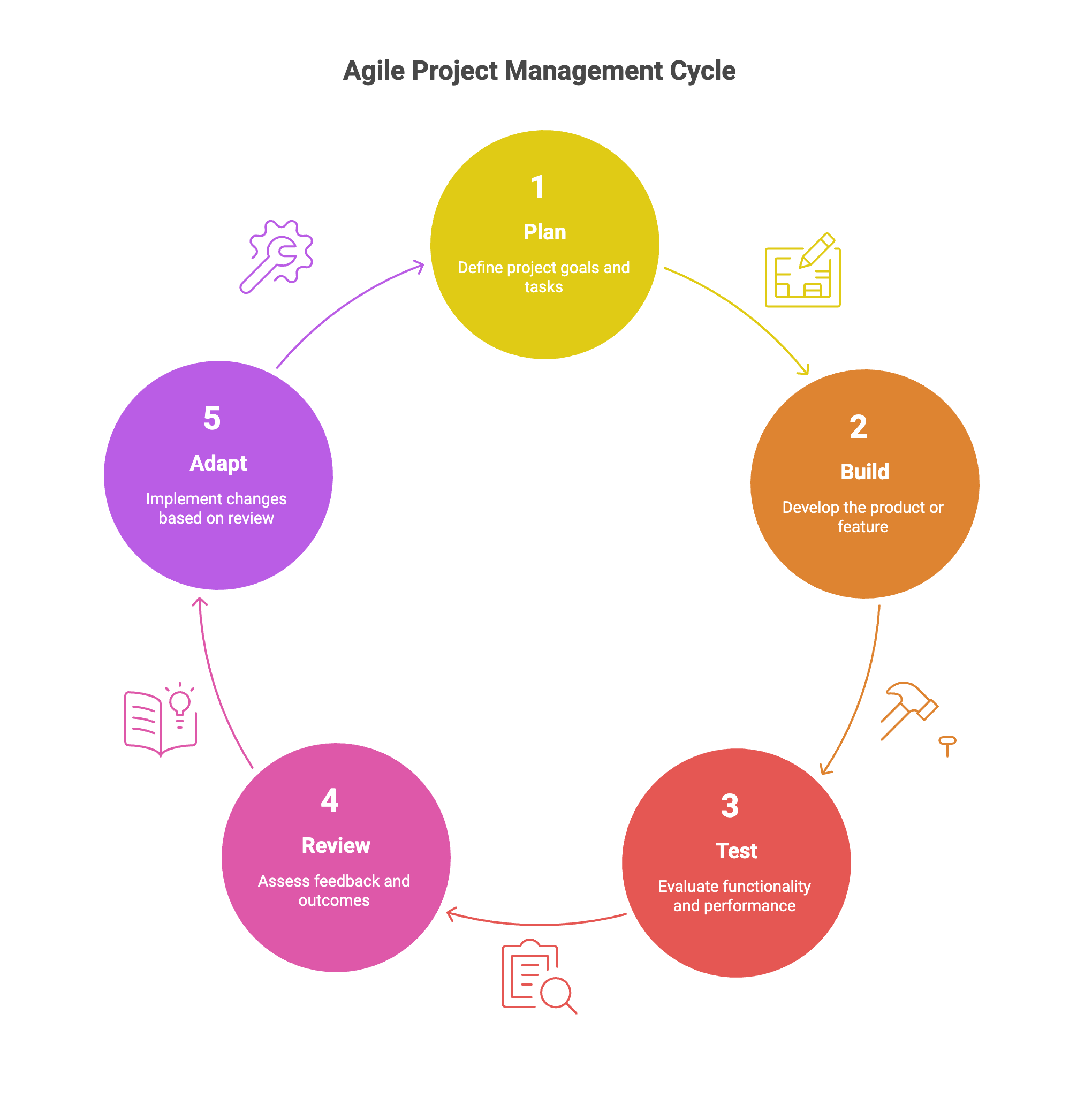
Best For:
- Software development projects
- Marketing campaigns with evolving requirements
- Product development in uncertain markets
- Startups pivoting based on market feedback
- Creative projects requiring experimentation
Pros:
✅ Highly adaptable to changes
✅ Early and frequent delivery
✅ Strong customer collaboration
✅ Improved team communication
✅ Risk reduction through iterations
Cons:
❌ Can lack predictability
❌ Requires experienced team members
❌ Documentation can be insufficient
❌ Scope creep if not managed well
Real Example: A SaaS startup used Agile to develop their customer portal. Through 2-week sprints and constant user feedback, they pivoted their feature set 3 times and launched a product that achieved 89% user satisfaction-much higher than their original concept would have delivered.
🚀 Agile Made Simple: Olqan’s workspace includes sprint planning, backlog management, and burndown charts to help your team embrace iterative development without the complexity.
3. Scrum Framework
What It Is: Scrum is a specific implementation of Agile that provides more structure through defined roles, events, and artifacts. It’s like Agile with training wheels-more guidance for teams new to iterative work.
Key Components:
Roles:
- Product Owner – Defines what to build
- Scrum Master – Facilitates the process
- Development Team – Builds the product
Events:
- Sprint Planning – Plan the upcoming sprint
- Daily Standups – Quick daily sync meetings
- Sprint Review – Demo completed work
- Sprint Retrospective – Improve the process
Artifacts:
- Product Backlog – List of all desired features
- Sprint Backlog – Work selected for current sprint
- Product Increment – Working product delivered each sprint
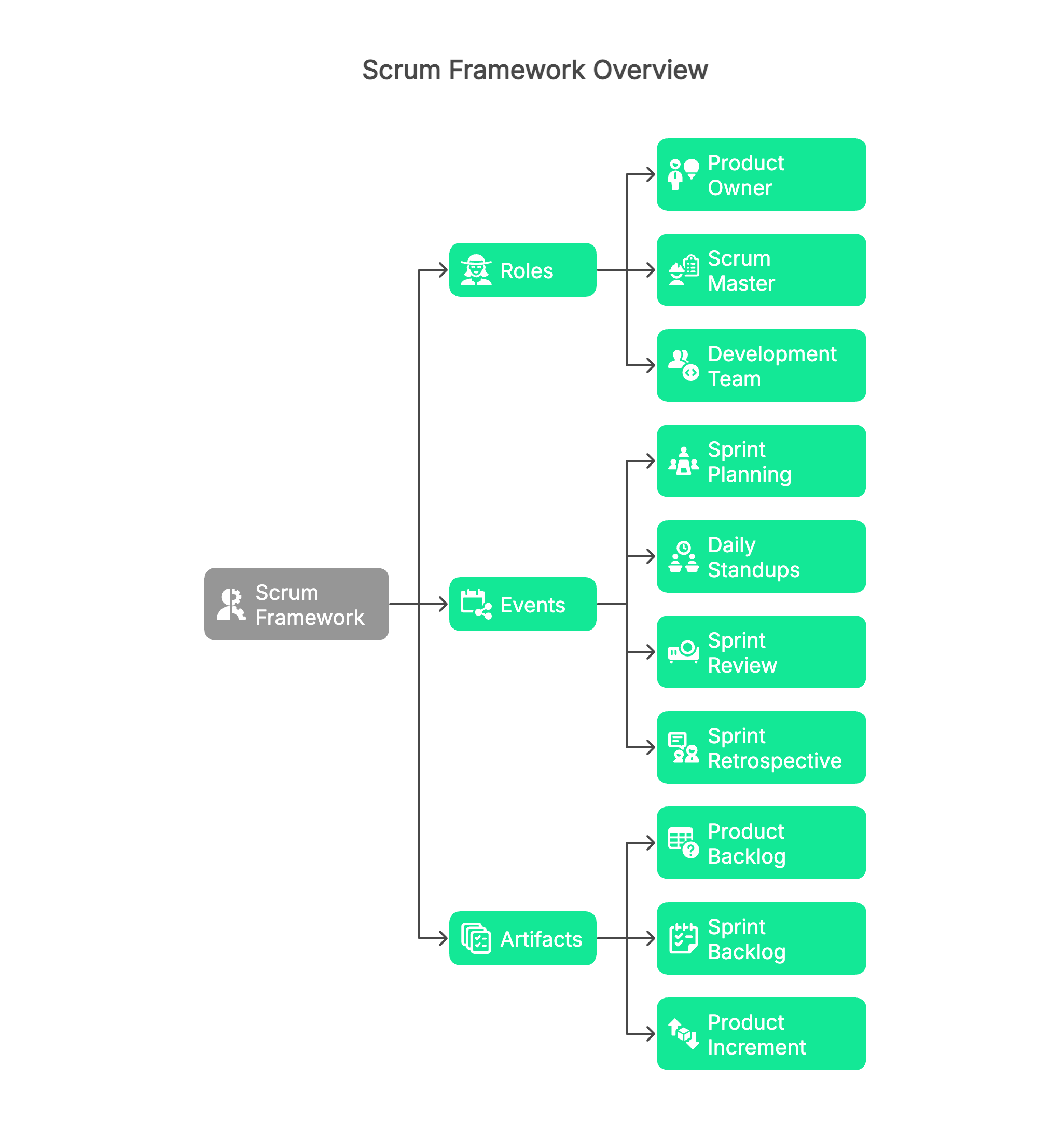
Best For:
- Software development teams new to Agile
- Product companies with complex backlogs
- Teams needing structure within iterative work
- Organizations transitioning from Waterfall to Agile
Pros:
✅ Clear roles and responsibilities
✅ Regular feedback and improvement
✅ Transparency and visibility
✅ Proven framework with extensive resources
✅ Good for team accountability
Cons:
❌ Can be rigid if not adapted properly
❌ Requires training and experience
❌ Daily meetings can become inefficient
❌ May not suit all project types
Real Example: An e-commerce company adopted Scrum for their website redesign. With clearly defined roles and 3-week sprints, they delivered a new shopping experience in 4 months instead of the originally planned 8 months, while incorporating user feedback throughout the process.
4. Kanban Method
What It Is: Kanban visualizes work flow using boards with columns representing different stages of work. It focuses on continuous delivery without fixed iterations, making it perfect for ongoing operational work.
Core Principles:
- Visualize workflow with boards and cards
- Limit work in progress to prevent overload
- Manage flow by identifying bottlenecks
- Make policies explicit with clear rules
- Continuous improvement through metrics
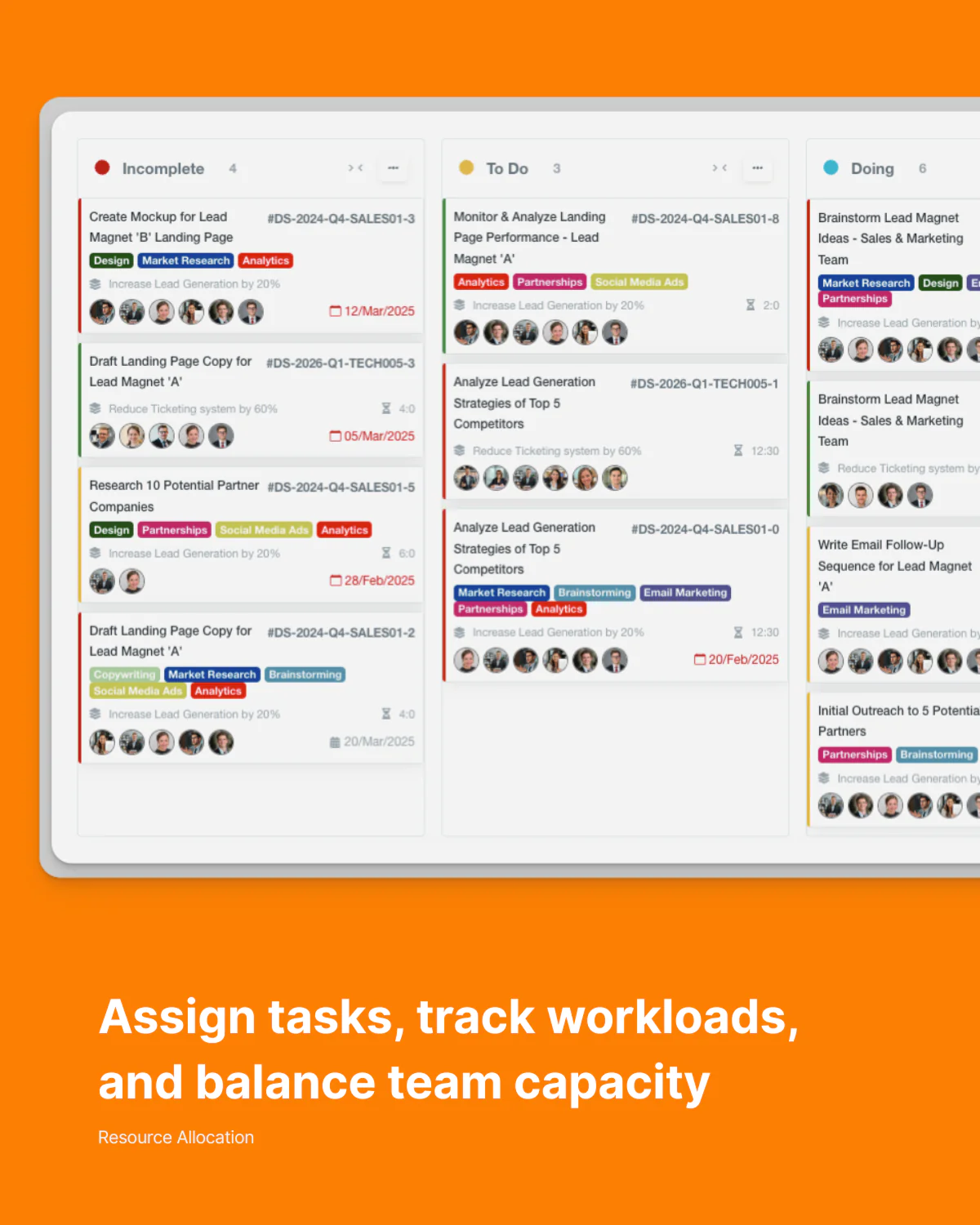
Best For:
- Support teams handling ongoing requests
- Marketing teams managing multiple campaigns
- Operations teams with continuous workflows
- Maintenance projects without fixed deadlines
- Teams wanting flexibility without sprint constraints
Pros:
✅ Visual and intuitive
✅ Flexible and adaptable
✅ Continuous delivery
✅ Easy to implement
✅ Great for operational work
Cons:
❌ Can lack urgency without deadlines
❌ Difficult to predict completion times
❌ May not suit projects with fixed timelines
❌ Requires discipline to limit work in progress
Real Example: A digital marketing agency implemented Kanban for client work. By visualizing all campaigns on boards and limiting work in progress, they reduced average campaign delivery time by 30% and eliminated the stress of constantly switching between projects.
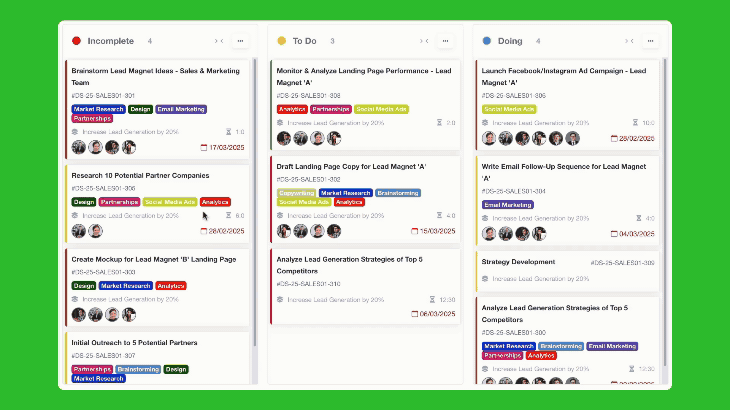
5. Lean Project Management
What It Is: Lean focuses on maximizing value while minimizing waste. Originally from manufacturing (Toyota Production System), it’s now applied to knowledge work and project management.
Core Principles:
- Eliminate waste in all forms (time, resources, effort)
- Amplify learning through rapid feedback
- Decide as late as possible to preserve options
- Deliver as fast as possible to get quick feedback
- Empower the team to make decisions
- Build integrity into the process
- See the whole system and optimize globally
Best For:
- Startups with limited resources
- Process improvement projects
- Organizations focused on efficiency
- Projects where speed and learning are crucial
- Resource-constrained environments
Pros:
✅ Focuses on value creation
✅ Eliminates wasteful activities
✅ Rapid learning and adaptation
✅ Cost-effective approach
✅ Encourages innovation
Cons:
❌ Can be too focused on speed
❌ May sacrifice quality if not balanced
❌ Requires cultural change
❌ Documentation may be insufficient
6. Hybrid Approaches
What It Is: Hybrid methodologies combine elements from different approaches to create a custom solution that fits specific business needs. Most successful organizations don’t use pure methodologies-they adapt and combine.
Common Hybrid Examples:
Wagile (Waterfall + Agile):
- Waterfall planning phase
- Agile execution phase
- Good for projects with clear requirements but uncertain implementation
Scrumban (Scrum + Kanban):
- Scrum’s roles and ceremonies
- Kanban’s visual workflow
- Perfect for teams wanting structure with flow flexibility
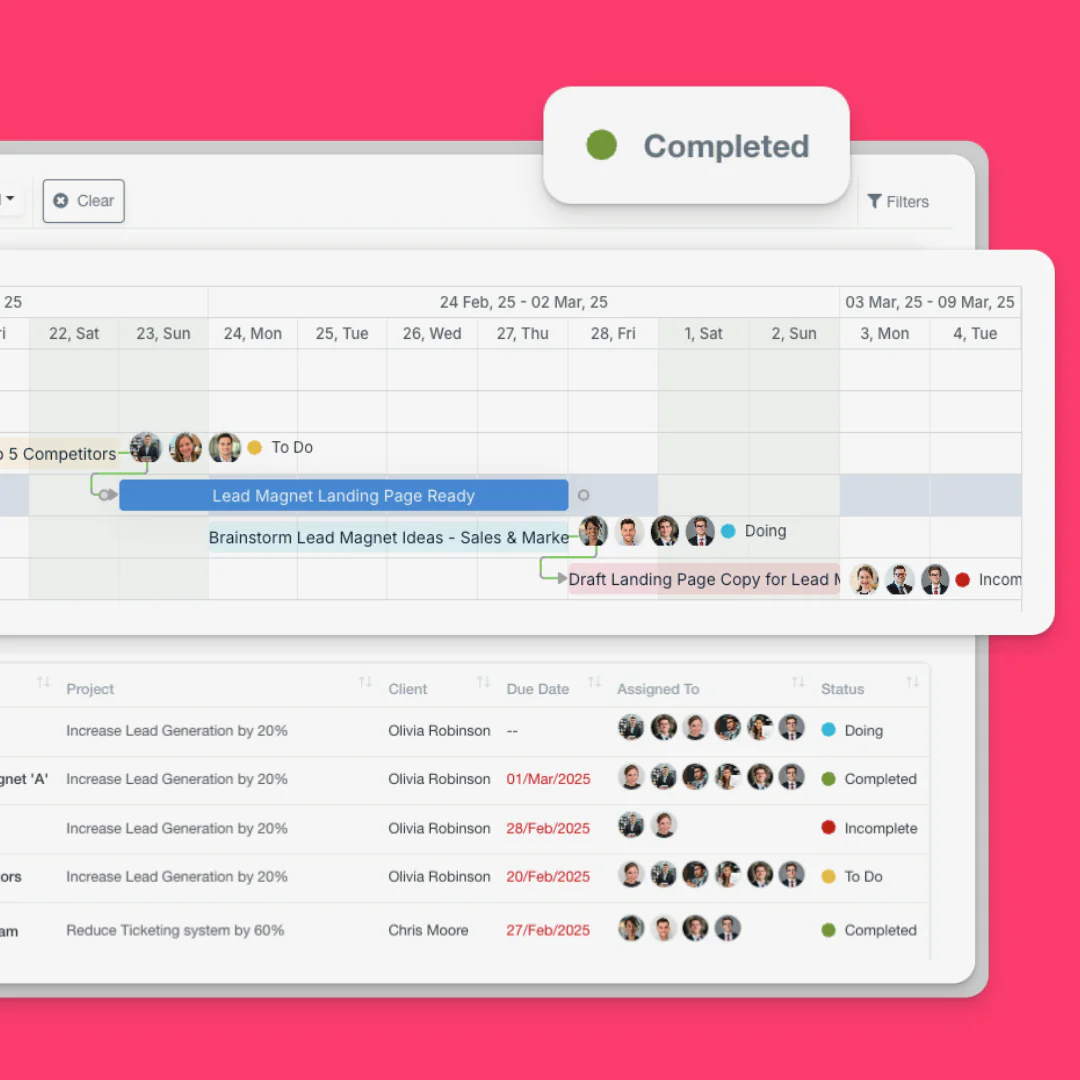
Best For:
- Large organizations with diverse project types
- Teams transitioning between methodologies
- Complex projects requiring multiple approaches
- Organizations with specific compliance requirements
How to Choose the Right Methodology for Your Business
Choosing the right methodology isn’t about following trends-it’s about matching approach to reality. Here’s a framework to guide your decision:
Step 1: Assess Your Project Characteristics
Ask these key questions:
Project Requirements:
- Are requirements clear and unlikely to change? → Waterfall
- Do requirements evolve based on feedback? → Agile/Scrum
- Is this ongoing operational work? → Kanban
Timeline Pressure:
- Fixed deadline with no flexibility? → Waterfall
- Need rapid delivery and iteration? → Agile
- Continuous delivery without fixed deadlines? → Kanban
Team Experience:
- Experienced team with proven processes? → Waterfall
- Need structure for inexperienced Agile team? → Scrum
- Self-organizing team wanting flexibility? → Kanban
Stakeholder Involvement:
- Limited stakeholder availability? → Waterfall
- High stakeholder collaboration needed? → Agile/Scrum
- Stakeholders prefer continuous visibility? → Kanban
Step 2: Evaluate Your Organization
Organizational Factors:
Company Culture:
- Risk-averse, process-oriented → Waterfall
- Innovation-focused, adaptive → Agile
- Efficiency-focused, continuous improvement → Lean
Industry Requirements:
- Heavily regulated (healthcare, finance) → Waterfall with compliance
- Technology/software → Agile/Scrum
- Service-based → Kanban
Resource Constraints:
- Limited budget, fixed scope → Waterfall
- Limited time, flexible scope → Agile
- Limited resources, need efficiency → Lean
Step 3: Start Small and Adapt
Don’t revolutionize everything at once. Here’s a proven implementation approach:
Phase 1: Pilot Project (Month 1-2)
- Choose one small, non-critical project
- Implement chosen methodology strictly
- Measure results and gather feedback
Phase 2: Refine and Expand (Month 3-4)
- Adapt methodology based on pilot learnings
- Apply to 2-3 additional projects
- Train team members on best practices
Phase 3: Scale and Optimize (Month 5+)
- Roll out to larger projects
- Develop organizational standards
- Continuously improve based on metrics
Implementation Best Practices for Each Methodology
Waterfall Implementation Tips:
1. Front-load the Requirements:
- Spend 25-30% of project time on requirements gathering
- Get sign-offs from all stakeholders
- Document everything in detail
2. Create Detailed Project Plans:
- Break down work into specific, measurable tasks
- Identify dependencies and critical path
- Build in buffer time for unexpected issues
3. Establish Clear Gates:
- Define what “done” means for each phase
- Require formal approval before moving forward
- Don’t skip phases even if pressure mounts
🎯 Waterfall Success: Olqan’s project planning tools include Gantt charts, milestone tracking, and approval workflows to keep your Waterfall projects on schedule and within scope.
Agile Implementation Tips:
1. Start with Short Sprints:
- Begin with 1-2 week sprints
- Focus on delivering working features
- Extend sprint length as team matures
2. Prioritize Customer Collaboration:
- Include customers in sprint reviews
- Gather feedback early and often
- Be prepared to change direction based on learning
3. Embrace the Retrospective:
- Hold honest retrospectives after each sprint
- Focus on process improvement, not blame
- Implement 1-2 improvements each sprint
Kanban Implementation Tips:
1. Start with Current Process:
- Map your existing workflow first
- Don’t change everything at once
- Add visualization before changing process
2. Limit Work in Progress:
- Start with current capacity + 1
- Reduce limits gradually as flow improves
- Focus on finishing work, not starting more
3. Measure and Improve Flow:
- Track cycle time and throughput
- Identify and eliminate bottlenecks
- Continuously optimize for faster delivery
📈 Flow Optimization: Olqan provides real-time insights into cycle times, bottlenecks, and team performance across any methodology you choose.
Common Implementation Mistakes to Avoid
1. Methodology Zealotry
Mistake: Rigidly following methodology rules without adapting to business needs. Solution: Remember that methodologies are tools, not religion. Adapt them to serve your business goals.
2. Changing Too Much Too Fast
Mistake: Implementing new methodology, tools, and processes simultaneously. Solution: Change one thing at a time. Master the methodology before changing tools.
3. Ignoring Team Readiness
Mistake: Choosing methodology based on industry trends rather than team capability. Solution: Assess your team’s experience and choose methodology that matches their maturity level.
4. Lack of Leadership Support
Mistake: Expecting teams to adopt new methodology without leadership buy-in. Solution: Ensure leadership understands and actively supports the chosen approach.
5. No Success Metrics
Mistake: Implementing methodology without defining what success looks like. Solution: Establish clear metrics and track improvement over time.
Measuring Success Across Methodologies
Regardless of which methodology you choose, track these key performance indicators:
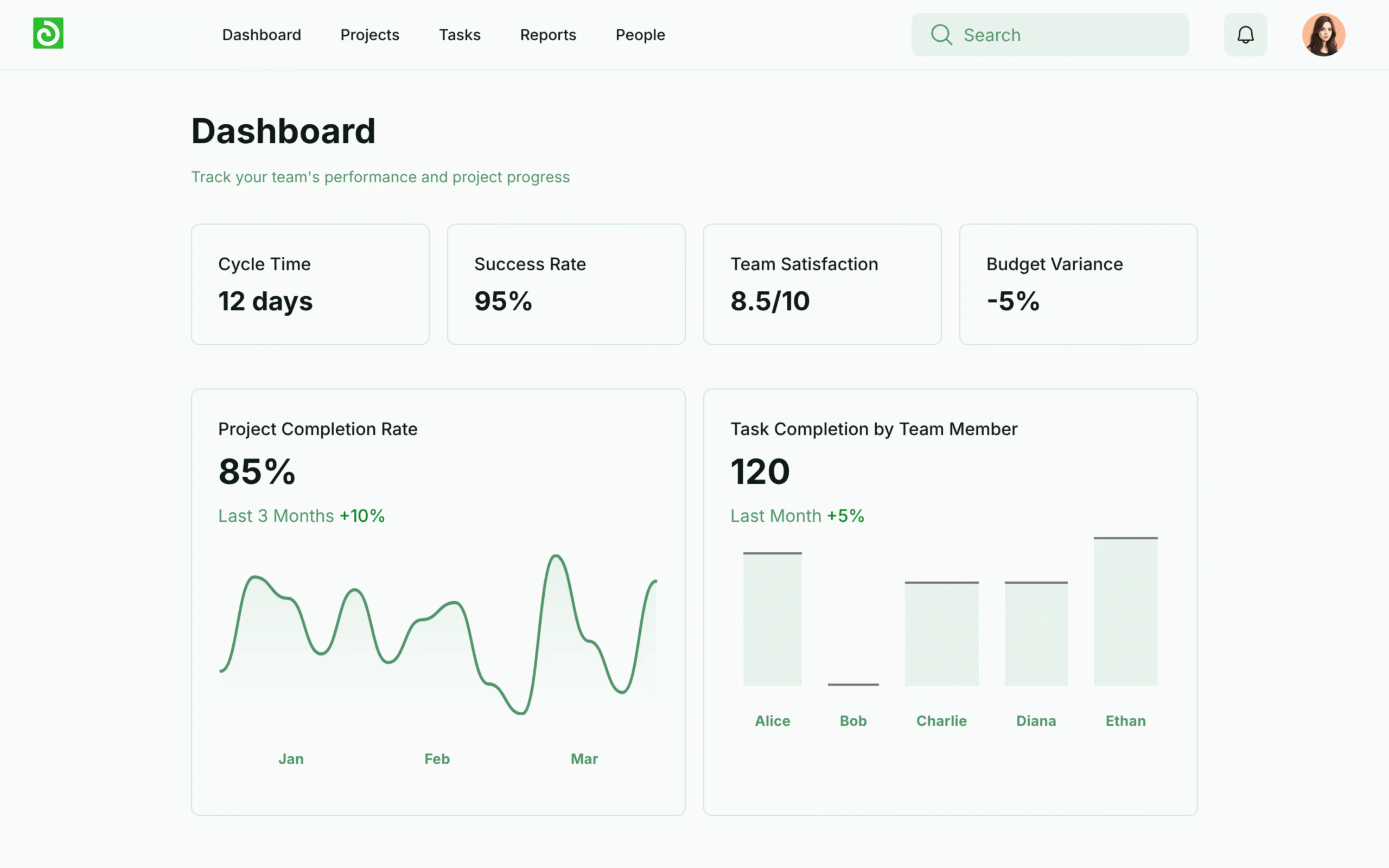
Universal Project Metrics:
- On-time delivery rate – Percentage of projects completed on schedule
- Budget variance – How close projects come to original budget
- Scope creep – How often requirements change after project start
- Quality metrics – Defect rates, customer satisfaction, rework percentage
Methodology-Specific Metrics:
Waterfall:
- Phase completion accuracy
- Requirements stability index
- Change request frequency
Agile/Scrum:
- Sprint goal achievement rate
- Velocity trends
- Story point accuracy
Kanban:
- Cycle time
- Throughput
- Work in progress efficiency
Team Satisfaction Metrics:
- Employee engagement scores
- Team confidence in delivery
- Stress levels and burnout indicators
- Professional development satisfaction
Real-World Success Stories
Case Study 1: Manufacturing Company – Waterfall Success
Challenge: A furniture manufacturer needed to launch a new product line with strict regulatory requirements and fixed retail deadlines.
Solution: Implemented Waterfall methodology with detailed upfront planning.
Results:
- Completed 6-month project on time and 3% under budget
- Zero regulatory compliance issues
- Retail launch met holiday season deadline
- Customer orders exceeded projections by 40%
Key Success Factors:
- Experienced project team
- Clear, stable requirements
- Strong stakeholder commitment
- Detailed risk management
Case Study 2: Software Startup – Agile Transformation
Challenge: A fintech startup needed to rapidly develop and iterate their mobile app based on user feedback.
Solution: Adopted Scrum with 2-week sprints and continuous user testing.
Results:
- Reduced time-to-market by 50%
- Achieved 4.8-star app store rating
- Increased user engagement by 300%
- Pivoted successfully based on market feedback
Key Success Factors:
- Strong Product Owner involvement
- Regular user feedback sessions
- Cross-functional team collaboration
- Commitment to iterative improvement
Case Study 3: Marketing Agency – Kanban Excellence
Challenge: A digital marketing agency struggled with multiple client campaigns, unclear priorities, and team burnout.
Solution: Implemented Kanban boards for campaign management with WIP limits.
Results:
- Reduced average campaign delivery time by 35%
- Increased team satisfaction scores by 60%
- Improved client satisfaction from 3.2 to 4.6/5
- Eliminated overtime while increasing output
Key Success Factors:
- Visual workflow management
- Strict work-in-progress limits
- Daily flow optimization
- Team empowerment in task selection
🏆 Success Stories: Read more about how businesses transformed their operations with Olqan’s project management solutions across different industries and methodologies.
The Role of Technology in Methodology Success
The right project management platform can make or break your methodology implementation. Here’s what to look for:
Essential Platform Features:
For Waterfall:
- Gantt chart planning and tracking
- Milestone and dependency management
- Document version control
- Approval workflow automation
For Agile/Scrum:
- Sprint planning and tracking
- Backlog management
- Burndown charts and velocity tracking
- Daily standup facilitation
For Kanban:
- Visual board customization
- Work-in-progress limit enforcement
- Cycle time analytics
- Flow optimization insights
For Any Methodology:
- Team collaboration tools
- Real-time reporting and dashboards
- Integration with existing tools
- Mobile accessibility
🛠️ All-in-One Solution: Olqan’s project management platform supports every methodology with flexible workflows, comprehensive reporting, and seamless team collaboration-all in one integrated system.
Your Action Plan: Choosing and Implementing Your Methodology
Ready to transform your project management? Follow this step-by-step action plan:
Week 1: Assessment and Selection
- Evaluate current projects using the decision framework
- Assess team readiness and organizational culture
- Choose methodology based on your specific needs
- Select pilot project for initial implementation
Week 2-3: Preparation and Training
- Train core team on chosen methodology
- Set up project management tools and templates
- Define success metrics and tracking methods
- Communicate changes to stakeholders
Week 4-8: Pilot Implementation
- Launch pilot project with chosen methodology
- Monitor progress and gather feedback weekly
- Make adjustments based on early learnings
- Document lessons learned and best practices
Week 9-12: Refinement and Expansion
- Analyze pilot results against success metrics
- Refine methodology based on learnings
- Apply to additional projects gradually
- Train broader team on successful practices
Month 4+: Scale and Optimize
- Roll out to all appropriate projects
- Establish organizational standards
- Continuously measure and improve
- Consider hybrid approaches for different project types
Future-Proofing Your Project Management
As your business grows and evolves, your project management needs will change too. Here’s how to stay adaptable:
Build Methodology Flexibility:
- Train teams in multiple approaches so they can adapt
- Use platforms that support different methodologies
- Regularly reassess your methodology choices
- Stay informed about emerging practices and tools
Embrace Continuous Improvement:
- Conduct quarterly methodology reviews
- Experiment with new techniques on low-risk projects
- Learn from other organizations in your industry
- Invest in ongoing team development
Related Reading
📖 Continue Your Project Management Journey:
- Why All-in-One Business Management Software is a Game-Changer for Small Businesses
- The Complete Guide to Scaling Your Small Business Operations
- Business Process Optimization Strategies That Increase Efficiency
Conclusion: Your Path to Project Success
Choosing the right project management methodology isn’t about finding the “best” approach-it’s about finding the best approach for your business. Whether you choose the structured predictability of Waterfall, the adaptive flexibility of Agile, the visual flow of Kanban, or a hybrid combination, success comes from matching methodology to reality.
Remember these key principles:
- Start small and scale gradually
- Adapt methodologies to fit your business, not vice versa
- Focus on team adoption and organizational readiness
- Measure results and continuously improve
- Choose tools that support your methodology choice
The methodology you choose today doesn’t have to be the methodology you use forever. As your business grows and evolves, so should your approach to project management.
🚀 Ready to transform your project management? Discover how Olqan supports every methodology with flexible workflows, comprehensive tracking, and powerful collaboration tools designed for growing businesses.
Frequently Asked Questions about Project Management Methodologies
What are project management methodologies?
Project management methodologies are structured approaches that guide project teams in planning, executing, and managing projects effectively. They provide a framework of best practices and principles to ensure project success.
What is the difference between agile and waterfall methodologies?
Agile is an iterative approach that allows for flexibility and adaptability in project management, particularly in software development. Waterfall, on the other hand, is a linear method where project tasks are completed in sequential phases. Each has its advantages depending on the type of project.
How can project management software assist in managing a project?
Project management software helps project managers and teams track project progress, manage resources, and collaborate effectively throughout the project. It can streamline project planning and enhance communication among team members.
What is agile project management?
Agile project management focuses on delivering high-quality results through iterative development and collaboration, making it ideal for projects with changing requirements, such as software development.
What is a project management framework?
A project management framework is a structured set of guidelines, practices, and methodologies that provide a comprehensive approach to managing a project from start to finish.
What are hybrid methodologies in project management?
Hybrid methodologies combine elements of both agile and traditional project management approaches, allowing teams to adapt to the specific needs of a project while maintaining structured processes.
How do project management certifications benefit professionals?
Project management certifications, such as those from the Project Management Institute, validate a professional’s skills and knowledge in various project management methodologies, enhancing their credibility and career prospects.
What are common project management best practices?
Common best practices include clear project planning, setting measurable project goals, effective communication, and regular monitoring of project progress to ensure alignment with objectives.
How can lean project management improve efficiency?
Lean project management focuses on minimizing waste and maximizing value, which helps project teams streamline processes and improve efficiency throughout the entire project lifecycle.
What role do project teams play in project management?
Project teams are crucial for executing project tasks and achieving project goals. Effective collaboration and communication within the project team are vital for project success.

